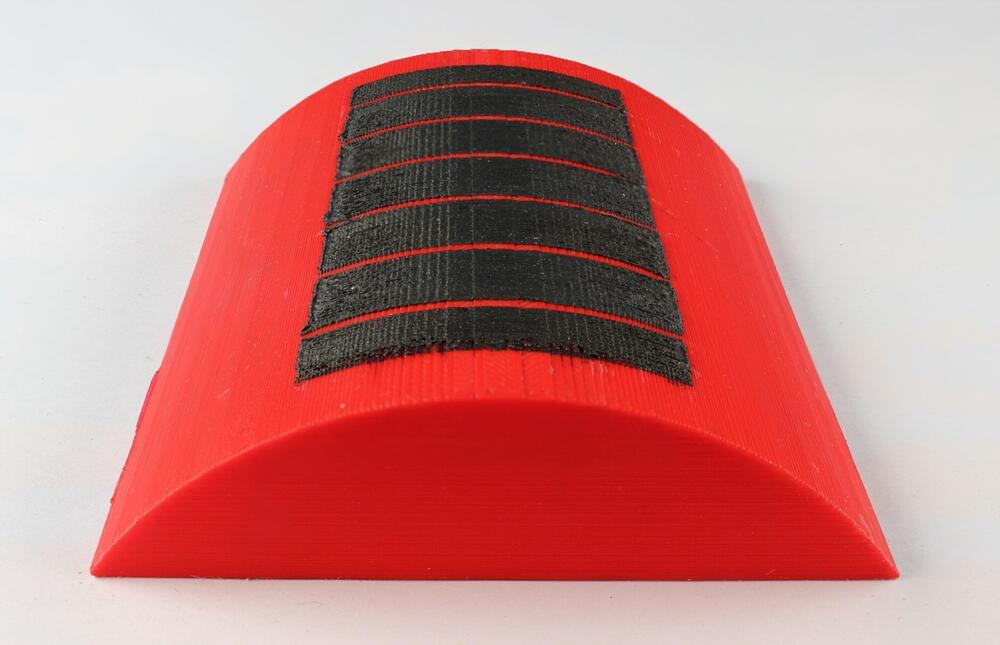So-called land planets may be habitable. Here’s why that matters.
Scientists propose so-called land planets have a better chance at sustaining alien life than Earth-like water worlds.


The James Dyson Award recently recognized a team of Malaysian designers for their sustainable desalination pod concept called WaterPod that works on solar distillation to convert seawater into drinkable water. Developed by Bennie Beh Hue May, Yap Chun Yoon, and Loo Xin Yang, the WaterPod is designed to be floated at sea, and therefore accessible to sea nomads.
WaterPod is a low-cost yet environmentally-friendly desalination method to generate drinkable water.



As workers move around, forecasters predict additional jobs will continue to open up in the new year, giving job-switchers even more opportunities to choose from, says Julia Pollak, chief economist with the job-search site ZipRecruiter.
“We’ve seen substantial job growth in recent months, all taking place without the labor force participation rate changing,” Pollak tells CNBC Make It. She says it’s “an exciting moment for job seekers who are benefiting from employers offering hiring incentives and reducing their requirements” to fill a sharply rising number of vacancies.
Here are three reasons why Pollak believes workers will continue to have their pick of jobs in 2022, and what it will take for more Americans to rejoin the labor force.

More precise, faster, cheaper: Researchers all over the world have been working for years on producing electrical circuits using additive processes such as robotic 3D-printing (so-called robocasting) with great success, but this is now becoming a problem. The metal particles that make such 3D substrates electrically conductive are exacerbating the problem of electronic waste, especially since the waste generated is likely to increase in the future in view of new types of disposable sensors, some of which are only used for a few days.
This constitutes unnecessary waste, according to Gustav Nyström, head of Empa’s Cellulose & Wood Materials lab: “There is an urgent need for materials that balance electronic performance, cost and sustainability.” To develop an environmentally friendly ink, Nyström’s team therefore set ambitious goals: metal-free, non-toxic, biodegradable. And with practical applications in mind: easily formable and stable to moisture and moderate heat.

SAIC-GM-Wuling uses cheap parts but makes them easy to replace.
TOKYO — At 28,800 yuan ($4,500), the Hongguang Mini EV has become a big seller in certain Chinese cities and villages. In Japan, a Nagoya University professor disassembled the electric vehicle to discover what kind of alchemy the manufacturer used to set such a low price.

The empirical fact of short winter days and long winter nights has been known essentially forever, and has driven enormous amounts of human activity including the construction of monuments like the passage tomb at Newgrange that I keep banging on about in previous posts about timekeeping. The correct explanation of the phenomenon has only been understood for around 400 years, dating back to Johannes Kepler’s description of the orbits of the planets.
The change in the relative length of days and nights is due to a combination of the motion of the Earth about the Sun, and the rotation of the Earth on its axis. Specifically, it happens because the Earth’s axis is tilted by about 23 degrees relative to the axis of its orbit. And because angular momentum is conserved, that axis stays pointing in the same direction through the whole orbit, in the same way that a gyroscope on a gimbal mount will remain pointed in the same direction in space as it’s moved around.
Full Story:
The bus that takes my 10-year-old to school picks him up at around 7:23 am, but he usually starts fidgeting loudly a good ten minutes before that, so he and I will go outside to wait. In recent weeks, between grumbles about particular classes or the recess monitor who won’t let him go outside in shorts and a T-shirt in 40-degree (F) weather, he’s been asking “Why is it so dark?” The answer, of course, is “astrophysics,” but with a side order of theology and politics.
This Tuesday, December 21, is the winter solstice in the Northern Hemisphere, meaning it’s the shortest day of the year. It’s not the earliest sunset (that was a couple of weeks ago) or the latest sunrise (that’s in early January), but it’s the day with the fewest hours between sunrise and sunset.
And they’re faster than AI.
Researchers at Cortical Labs, a biotechnology startup, have successfully taught human brain cells in a petri dish how to play the 2D table tennis simulation video game “Pong”.
The team managed to create mini-brains consisting of 800,000 to one million living human brain cells in a petri dish, reports New Scientist. Regarding the unlikely study, Brett Kagan, chief scientific officer at Cortical Labs and research lead of the project, says We think… See more.